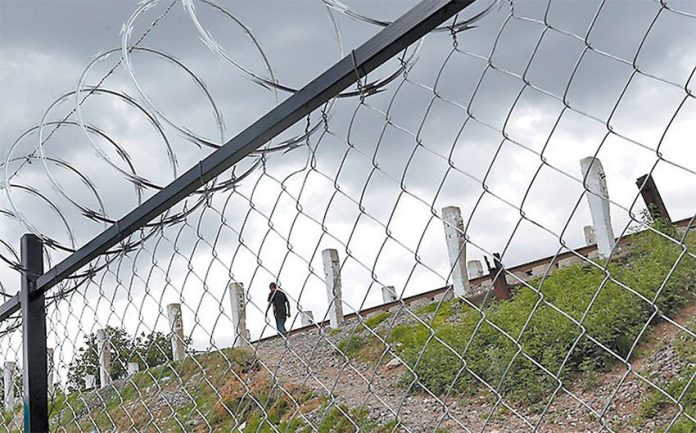A razor wire-topped chain-link fence around a migrant shelter in Apizaco, Tlaxcala, was erected for security reasons and not because of discrimination, residents say.
Residents of the Ferrocarrilera neighborhood say that the fence was required to guarantee safety in the area.
They claim that the neighborhood has been overrun by drugs, disease and crime since the Sagrada Familia Shelter opened in 2010. Some residents say that migrants have broken into their houses, and that they don’t feel safe anymore.
“We can’t go outside after seven or eight at night,” Mónica Ramos told the newspaper Milenio. “We have to stay in our houses because of the insecurity.”
A large influx of migrants has overwhelmed the shelter’s capacity during the past year, with as many as 300 people sleeping in the facility. Neighborhood residents say that some end up sleeping on the street in front of their houses.
“We don’t have the tranquility we had before, and we feel afraid because there are people we don’t know,” said Julio Flores, a member of a neighborhood committee. “We don’t know who these people are who are in front of our houses.”
The committee came to an agreement with the municipal government to build the fence, whose gate will close between 10:00pm and 7:00am daily, preventing migrants from leaving the shelter. But now, some people in the neighborhood are asking the municipality to close the shelter indefinitely.
However, many others see the fence as a sign of discrimination against migrants. Shelter director Elías Dávila told Milenio that he understands the concerns of the neighborhood, but he is asking them to be tolerant and remove the fence.
“There are people who, thankfully, help migrants, but there are others who, influenced by [U.S. President] Trump, have racist attitudes,” he said. “The fence is a sign of discrimination, of contempt for migrants. It says, ‘We don’t allow migrants here, because they are migrants.’”
Representatives of the Catholic Church in Tlaxcala called the fence “antihuman,” and said they will appeal to the National Human Rights Commission to have it removed.
Source: Milenio (sp), El Sol de Tlaxcala (sp)
